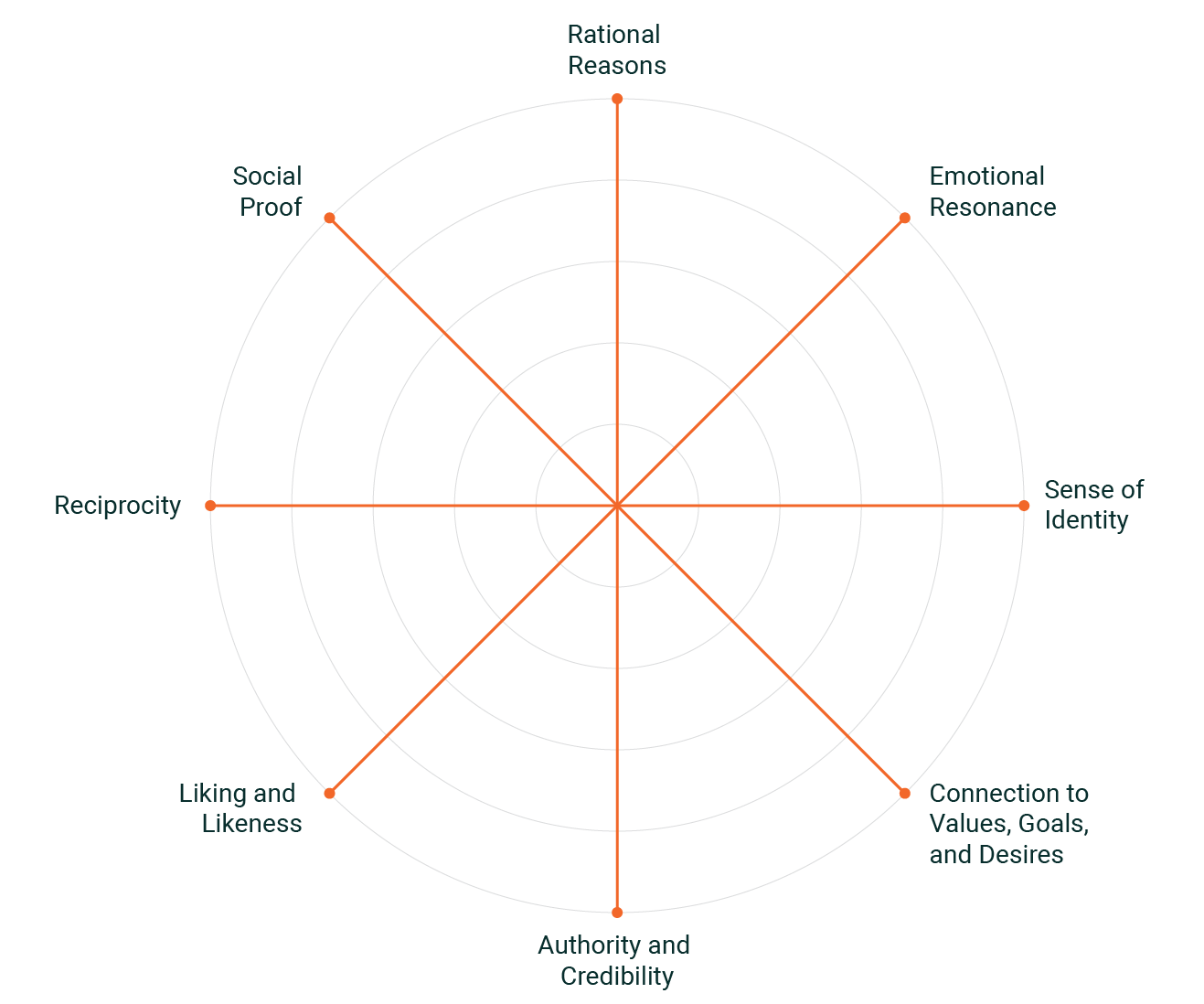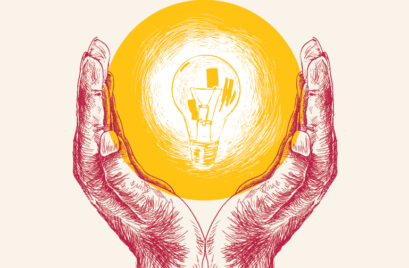
“Leadership is influence.” – John C. Maxwell
What Influences You?
As Dan Pink reminds us, 40% of a leader’s job today is influencing. Given that in contemporary complex, interconnected organisations, we can’t get anything done by ourselves, one could argue that a leader is fundamentally measured by their capacity to influence others to reach a shared outcome.
So, what influences you? Our answer to this question generally reflects how we seek to influence others. Decades of research reveal a number of different levers for influence – some of which are grounded more in how our minds operate and make decisions, while others sit within the relationship and social dynamics of the situation. A leader should be familiar with a variety of styles and factors for influencing. So, let’s take a look at the eight levers of influence that we see as particularly important in the workplace today:

Finding Your Approach
Rational Reasons: This is the lever we are probably most familiar with. When we think influencing, we think giving reasons, making an argument and trying to convince the other person. And it’s true, logical arguments, data, and evidence can persuade individuals who prioritise analytical or objective decision-making. Humans are motivated to do something when they see a logical connection between the action and to the attainment of our values and needs. However, influencing involves a lot more than just the quality of the argument we make.
Emotional Resonance: Emotions, such as fear, joy, sadness, and hope can powerfully influence decisions. Emotions inspire action and are aroused by the language we use and how we structure communication. Using metaphors, analogies, and stories is far more emotionally salient than a factual statement. Advertisers shape emotions in their messaging, for example seeking to energise and inspire (like a Nike running ad) or create a sense of urgency and scarcity (like the Black Friday sales).
In fact, we don’t – and can’t – make decisions without emotion! Antonio Damasio’s seminal study found that when humans had damaged the area of their brain where emotions were generated and processed, despite still being able to use logic and functioning completely normally, individuals void of emotion seriously struggled to make any decisions – even simple decisions like what to eat for lunch. Emotions are an intrinsic driver of our behaviour and shape the decisions we make, including those that are influenced by others.
Sense of Identity: People are motivated to pursue a positive identity and maintain a consistent self-image. There is considerable psychological research now confirming that humans process information relating to themselves differently to information about other people. Importantly, we are biased towards information that confirms our existing self-image or portrays us in a positive light. When it comes to being influenced, we are naturally drawn to options that enable us to maintain the self-image we want.
Connection to Values, Goals, and Desires: People are motivated to do things that align with their core values, and their goals and desires. Each of us sees the world through the lens of our own objectives in life. To the extent in which you align your influencing appeal with what a person holds to be important, what they want to achieve, and what they wish to obtain (for themselves or for others), it will be more effective.
Authority and Credibility: People are influenced by perceived experts or authoritative figures. Perhaps the most infamous psychological study ever done was the Milgram obedience experiment. Participants were ordered to deliver, what they thought were, increasing levels of shock to a learner in response to incorrect answers. Despite agonising screams from the actor playing the learner, participants continued to comply with the orders given by the supposed doctor who showed all the signs of classic authority. From the workplace to laboratories, humans are susceptible to being influenced by those who they perceive to be authority figures and as having expert knowledge on a subject.
Liking and Likeness: We are more likely to be influenced by people we like, and people who we think are like us. This is part of a broader sociological principle called homophily – the tendency of similar people to flock together. For this reason, professional networks are marked by considerable homogeneity. When trying to influence, the degree in which we are perceived to be similar to the person and are liked by them will affect our success.
Reciprocity: We feel a desire or obligation to reciprocate acts of kindness. Gift giving is a practice that is observed cross-culturally. For centuries humans have been doing things for one another as a form of social bonding. In fact, there is also research showing that if someone asks you to do them a favour and you do it, you actually like them more – the so-called “Ben Franklin effect”. This signals to your brain that they are worth doing favours for.
Social Proof: We are more likely to do something if we see others doing or endorsing it. An example of this is how online customer reviews and ratings often factor into people’s purchase decisions. Social proof ties into emotion as well. When we are uncertain or unsure, we want to fit in and follow what others are doing. When we are feeling safe and curious, we might want to stand out. Think about whether you’d want an insurance policy if nobody else had it (fitting in) versus if you want to wear a bright and unique outfit with your standard social circle (standing out).
Our sphere of direct control in life is often very small. Even as a leader, there are usually only a handful of people who we might have the power to direct. And this sort of control is tenuous at best – likely to ensure compliance with the word of a direction but not the spirit. That’s why if we want to truly get anything done – we need to be able to influence. Consider what influencing lever (or multiple) might support you in the outcomes you’re trying to achieve.








